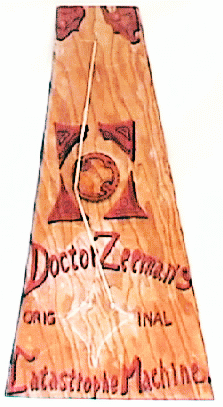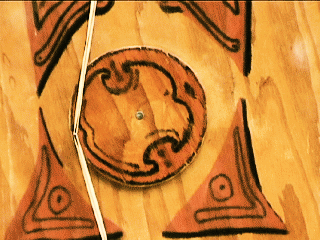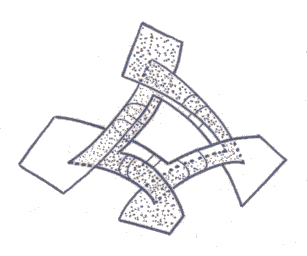 |
 |

 |
 |
| The catastrophe locus (roughly sketched out in chalk) is entirely contained in a small region of the plane. If the control point is displaced outside that region, the wheel tracks smoothly. | The wheel responds discontinuously when the control point crosses the catastrophe locus. |
![[Animation]](images/flip-books/circle1.gif)
|
![[Animation]](images/flip-books/snap1.gif)
|
| The "sheets" corresponding to the two cusps, and the fold lines which issue from the cusps, are connected as shown on the right. Here the stippled areas correspond to local minima; the unstippled ones are inaccessible. The sheets all extend across the picture - they have been cut away for visibility's sake. |  |
4. Doctor Zeeman's Original Catastrophe Machine